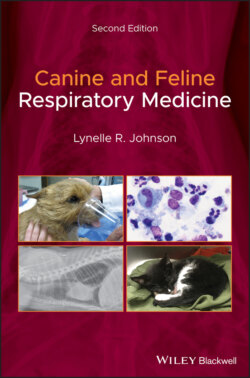Читать книгу Canine and Feline Respiratory Medicine - Lynelle Johnson R., Lynelle R. Johnson - Страница 39
Ultrasound
ОглавлениеUltrasound of the larynx can be used to evaluate patients for laryngeal paralysis or mass lesions, and cervical tracheal collapse can also be identified with ultrasound. However, these studies can be technically challenging because soft tissues are adjacent to air‐filled structures, which causes marked attenuation of the ultrasound beam. However, valuable information can be gained by an experienced ultrasonographer.
Thoracic ultrasound is highly useful in detecting pleural fluid and evaluating parenchymal mass lesions, and has also proven effective in evaluating pulmonary infiltrates, particularly in the emergency situation when the clinician needs to distinguish congestive heart failure from a respiratory condition. The presence of fluid in the interstitial–alveolar space in association with pulmonary edema results in the artifact of comet tails, referred to as B‐lines. In dogs and cats with pulmonary edema due to congestive heart failure, there is an increase in the number of detectable B‐lines visible in multiple lung fields (Lisciandro et al. 2017; Ward et al. 2017). Because this technique relies on attenuation of the ultrasound beam by thickening of the interstitial–alveolar junctions, other diseases that result in this process and extend to the lung periphery could lead to the generation of B‐lines on ultrasound. Therefore, the use of lung ultrasound in large numbers of patients with respiratory conditions such as interstitial lung disease, pneumonia, and non‐cardiogenic pulmonary edema requires additional study. Nonetheless, it appears that ultrasound of the lung could be used to evaluate patients for fluid overload or congestive failure and assess response to therapy. This technique would likely be less stressful to the patient than recheck radiographs.
